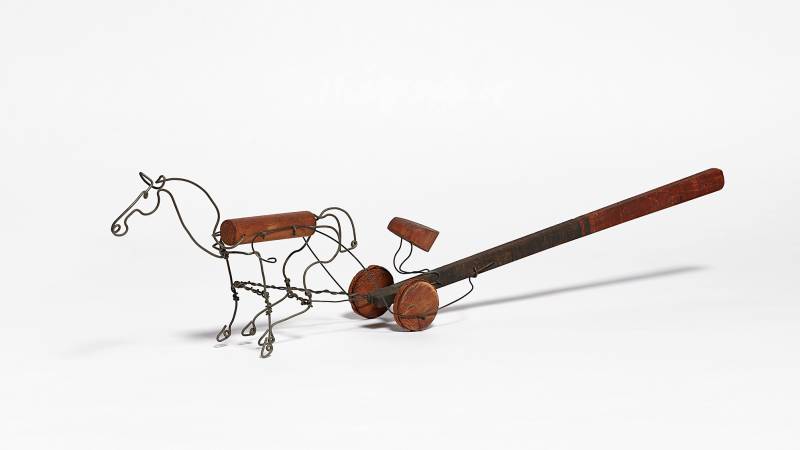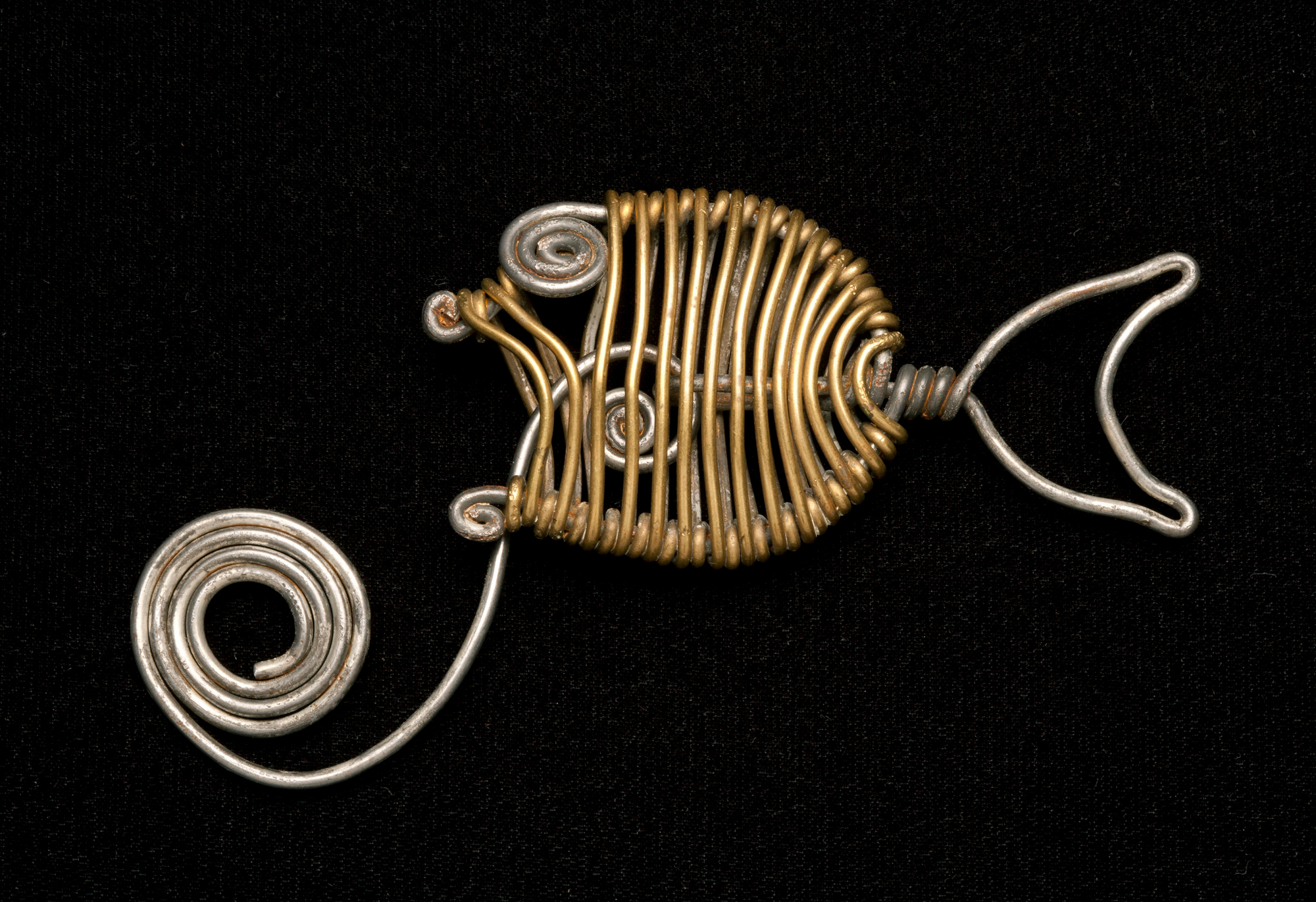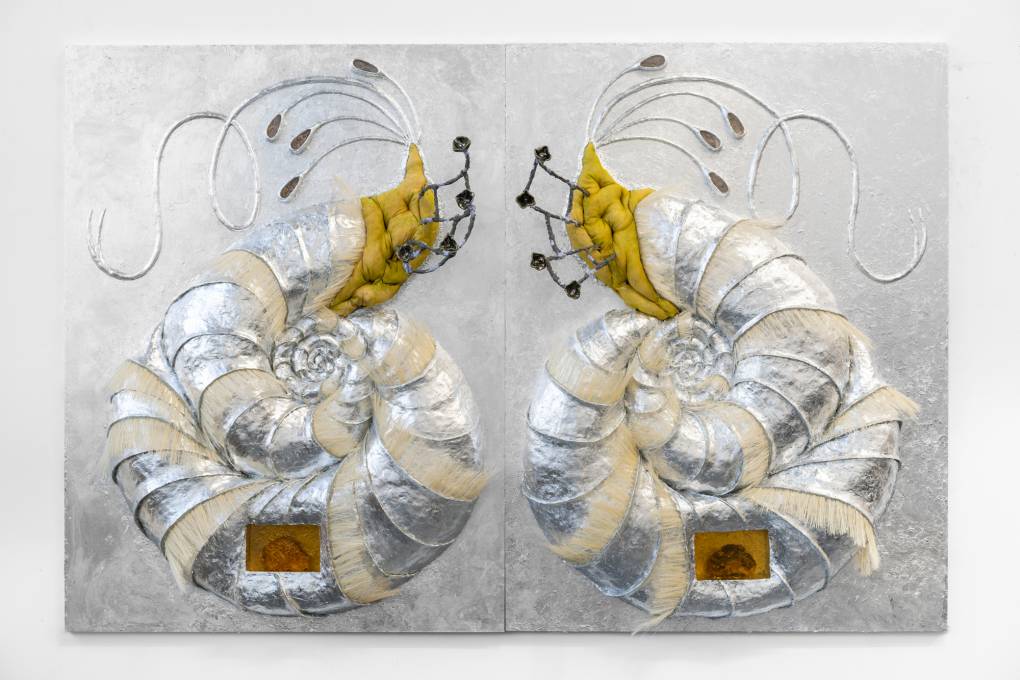Calder: at home, among friends is dedicated to the intimate objects Alexander Calder made throughout his life, mostly as gifts for friends and family. The selection is limited to works from the San José Museum of Art’s collection, itself a small sampling of his output (he made over 2,000 pieces of jewelry alone during his lifetime), but the museum’s holdings have an interesting provenance. From 1975 to 1983, the artist’s niece Janet Gray Hayes was the mayor of San José. The majority of the objects presented come from Hayes’ foundation and personal collection, now donated to the museum.
In San José, Calder’s Twists on Everyday Objects Continue to Inspire

Calder’s iconic mobiles have always seemed tasteful, but ultimately decorative to me. I usually saw them as perfunctory obstacles in museum lobbies, something I would rush past on my way to the main event. But after reading of a studio visit that the painter William Copely did with Calder in Connecticut, I decided I owed the artist another chance. Copley described Calder’s converted barn studio as a mad scientist’s lair. The sculptures we’re so used to seeing stationary over plinths in white-walled rooms were originally twisting and spinning in the open-air breeze. Imagining the mobiles in motion, and in such dense proximity, piqued my curiosity.
The exhibit in San José houses a fine assortment of objects, including a twisted wire baby rattle and a spiral belt buckle, the detailing on which recalls Ionic Greek columns. Wall text explains that a pair of pliers changed young Calder’s life. He never traveled without a spool of wire and pliers on hand.

Whenever a household item broke or was in need of repair Calder capitalized on the opportunity to customize the article in his own style. A small pair of scissors were amended with Calder-ized brass wire handles. A clock was reduced to just a primary red minute hand fashioned over two black-painted sheet metal mountainous peaks.
At the museum, what struck me most about the wire works was the heft of the material. The wire is thick, manipulating it would have taken considerable effort. There is a reassuring calm that comes with seeing these whimsical objects fashioned from the stuff. They have a presence in the room. They look heavy, like the hand-feel would be amazing.
I had a similarly tactile response to the show’s mobiles, which have a surprising handmade quality. In my first up-close inspection, I was delighted to see drips of actual paint on the primary-colored components of the hanging sculptures. Big Red (1959) is the most quintessential Calder piece in the room. He created the mobile as a gift for his sister, Margaret, who was recovering from an illness at the time. Big Red came out twice as large as expected, but nevertheless she found a place for it.

This piece, like the artist’s other pendulous sculptures, is complex. The mobiles have a scholastic quality, reminiscent of classroom solar system displays. The hanging elements are equal parts Wright brothers and Piet Mondrian. They are sparse and skeletal like the bones of a cartoon fish. At the museum, shadows quadruple their geometry, making their presence that much more substantive. Suddenly, I was thinking about the shadows of Plato’s cave and Tom and Jerry, all at once.
Emerging from Calder: at home, among friends, one must walk through the exhibition Still in Motion, a show of works by four recent recipients of the Calder prize, a $50,000 award and 3-month residency at Calder’s studio in France. At first I was disappointed that the two shows shared real estate, but after a dose of Calder’s work, Still in Motion shifted; I became so much more aware of references to spirals, circles, and loops.
The result is an interesting dialogue. The curved edges of Tara Donovan’s bulbous floor sculpture, constructed of paper plates, picks up on the continuous swirling lines in the gouache drawing that Calder made as a gift for Louise Nevelson. Even Jill Magid’s appalling NFT of flowers spinning in place on a vertically oriented flat-screen TV was redeemed by its proximity to Calder.

The real star of that show is Aki Sasamoto’s video Delicate Cycle (2017), a half-hour video of the artist performing a variety of cleaning-oriented tasks and reflecting on childhood impressions of the dung beetle. There is no direct link between Calder’s coiled wire household items and Sasamoto’s video, but time spent with both conjures an intriguing lineage. The rotations of a laundry machine recall the circular fascination Calder inserted into quotidian things like buttons and belt buckles. Sasamoto’s reflection on her adolescence echoes the educational quality of Calder’s mobiles. The act of cleaning itself belongs to a certain cycle: A thing gets used, gets dirty, gets clean, and it all starts over again.
Calder refused to provide any explanation for his work during his lifetime. By leaving his art open-ended, it continues to evolve, suspended in orbit, circulating into contemporary art, coiling and uncoiling in perpetuity.
‘Calder: at home, among friends’ is on view at the San José Museum of Art through Aug. 3, 2025.



